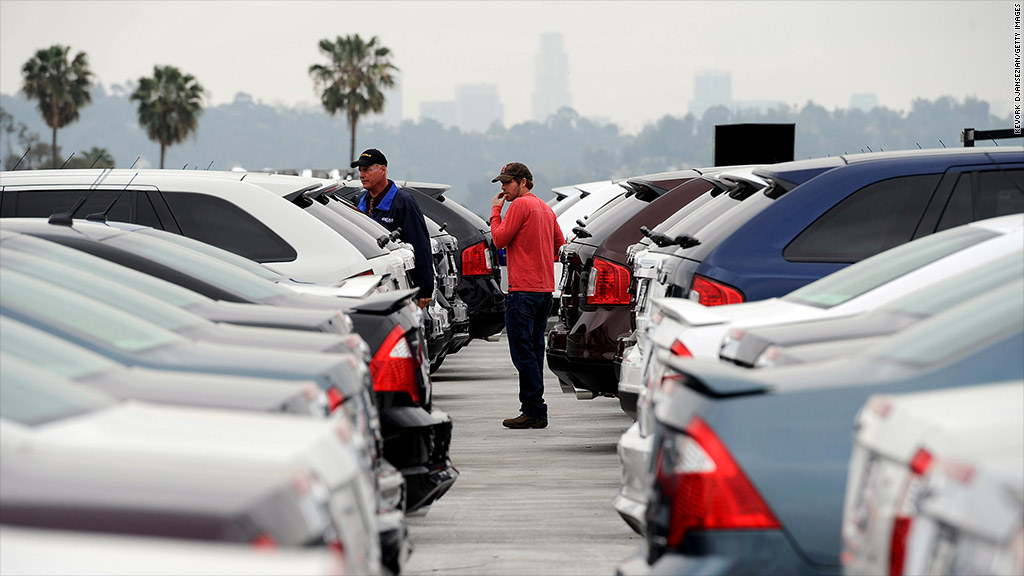

Other automakers are due to report results later Friday or on Monday.
SHIFT CAR SALES STOCK DRIVERS
And other supply chain issues, including an imbalance of shipping containers and congestion at the nation’s ports, a shortage of truck drivers and general labor shortages, started limiting supplies of other needed parts and raw materials. While the automakers expected to be able to increase their supply of chips by the middle of this year, they were hit by outbreaks of Covid cases in other regions, such as Southeast Asia, where many of the chip plants were shut. When sales rebounded much faster than anyone expected, the supply of chips had already gone to other customers. Most automakers, expecting a prolonged downturn in sales, trimmed orders for computer chips and other parts. The computer chip shortage started when auto sales plunged in the early weeks of the pandemic, due to record job losses and the temporary closure of many factories and dealerships. (AP Photo/David Zalubowski) David Zalubowski/AP/FILEīiden official reveals the failure behind America's epic chip shortage “As we look to the fourth quarter, a steady flow of vehicles held at plants will continue to be released to dealers, we are restarting production at key crossover and car plants, and we look forward to a more stable operating environment through the fall.”Ī lone line of unsold 2021 pickup trucks in an empty storage lot at a Dodge Ram dealership Sunday, Sept. “The semiconductor supply disruptions that impacted our third-quarter wholesale and customer deliveries are improving,” said the nation’s largest automaker in a statement. (GM) has been forced to temporarily shut production of most of its North American plants. (GM) said it expects the situation will improve in the final three months of 2021, but earlier this year automakers had hoped things would have improved by this point.

The auto industry has been dealing with a shortage of computer chips needed to build cars for more than a year. The shortage of vehicles has also led to record-high prices for both new and used cars for much of this year, which has also been a drag on sales, as some buyers have been priced out of the new car market. “While the various supply chain issues facing our industry continue to impact available inventory, we know the demand for our vehicles is still there,” said Jeff Kommor, US head of sales for Stellantis. So all the automakers pointed to semiconductor supply chain disruptions and historically low inventories as a problem for sales. (The company breaks out monthly sales numbers, unlike GM and Stellantis.) While Toyota has reported fewer supply chain disruptions than other major automakers it, too, has had to cut back production at some factories more recently.

But that three-month total includes a 22% plunge in September sales. Sales at Stellantis, the company formed by the merger of Fiat Chrysler and France’s PSA Group, fell 19% from a year ago, and 27% from the pre-pandemic period.Īt Toyota Motor, which includes Toyota and Lexus, third quarter sales edged up 1.4% compared to a year ago. General Motors reported sales fell a third from a year-ago last quarter, and they were off 40% from the same quarter of 2019 before the pandemic roiled the car market. The bourse is processing membership applications from many local brokers which will allow them trading on four products, including GIFT Nifty 50 and GIFT Nifty Bank, he added.New car sales plunged over the last three months in the United States despite strong demand, as the shortage of computer chips and other supply chain issues caused shutdowns at auto factories and choked off the supply of vehicles. “There could be some apprehension among certain traders.” Balasubramaniam, chief executive officer of NSE IX Ltd., a unit of National Stock Exchange of India Ltd.

“Four-five days are not enough to judge a trend but we are hopeful that by the end of the month volumes will pick up,” said V. Trading in SGX Nifty, the SGX-traded futures on India’s key equity NSE Nifty 50 Index, was shifted to the NSE International Exchange at GIFT City on July 3, in a triumph for the South Asian nation’s attempt to bring back the transactions that had moved to global financial centers. The contracts had a notional value of about $7.5 billion when the switch in trading venue was made. That’s lower than the 60,884 future contracts in the first five trading days in April, May, and June traded on Singapore Exchange Ltd. The average number of open contracts for NSE International Exchange’s key product GIFT Nifty was 32,934 in the week to July 7, according to data compiled by Bloomberg. (Bloomberg) - The trading of India stock futures that shifted to Gujarat from Singapore last week met with lukewarm reception, suggesting apprehension among some equity investors about the success of the switch.


 0 kommentar(er)
0 kommentar(er)
